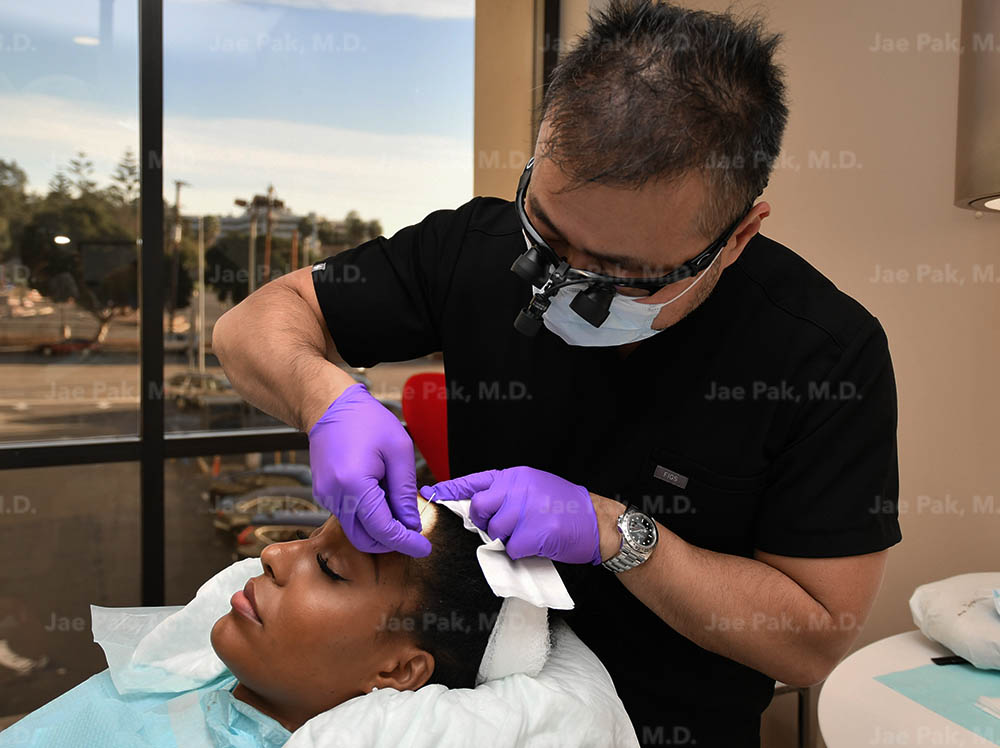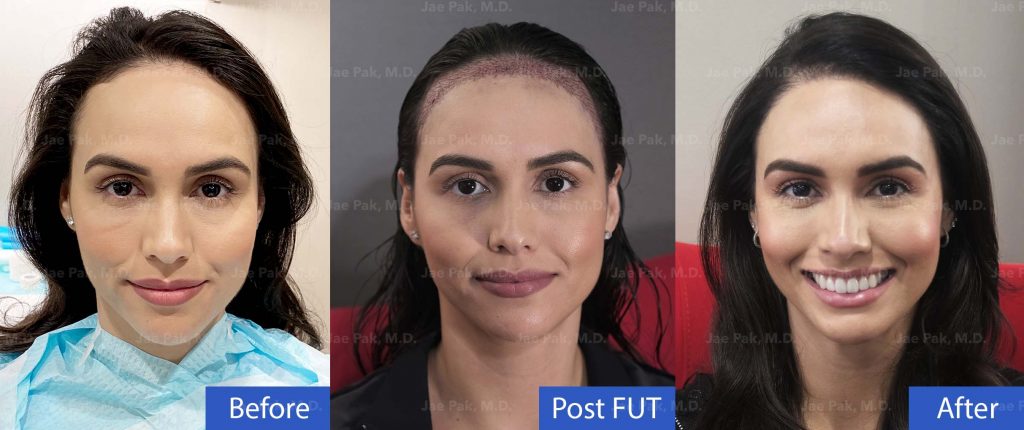Hair Transplant for Women | Procedure, Recovery, Cost, and Considerations

We tend to think of hair transplant as a “guy thing,” and looking at the statistics for hair loss by gender; it makes sense that we have this association.
Nearly 60% of men experience some degree of pattern balding – androgenetic alopecia – before they hit the age of 40 years old. It’s no wonder why hair transplants are more popular than ever among men.
These facts are well-known, but just how common are hair transplants for women, and how different is the overall process from beginning to end?
It’s an interesting topic with many layers, so let’s dedicate this article to discussing hair transplants for women, including research, conditions, costs, procedures, and more.
Key Considerations
Here are the first few questions that need answering when talking about the prospect of hair transplants for women – are these procedures necessary for women, and what makes them good candidates or not?
Also, what should a woman look for when choosing a clinic and surgeon, even if just for consultation purposes? Let’s cover these fundamentals now.
Thinning vs. Balding and Other Causes
When it comes to women losing their hair, the trends are a bit different from the type of balding seen in men. This has implications for a hair transplant and determines whether it’s really the best course of action for restoration and results.
First, consider that women are far less likely to suffer from androgenetic alopecia. Their hair tends to diminish differently from the typical male “M-shaped” pattern on the head.
Instead, women typically notice thinning hair along the middle “part” of the head, indicated by a widening strip of skin and greater scalp visibility. Some women will also see minor thinning on the hairline, but not to the degree most men experience it.
Certain medications and alternative treatments can often help slow or reverse these common trends in hair loss. For example, treatments like minoxidil and microneedling have been shown to be more effective for women.
For these reasons, hair transplants are simply not as common or widely recommended for women.
Of course, certain situations call for a hair transplant for women, such as severe thinning or pattern balding, hair loss from trauma, or traction alopecia due to straining hairstyles worn over the years.
In short, hair transplants are certainly less common for women, but there are also many cases in which women have had outstanding results from these procedures.
Choosing a Doctor
While many plastic surgeons and cosmetic surgeons will include “hair transplant for women” among their long list of offerings, only an expert transplant specialist will have the technical and artistic ability to create natural, aesthetic results that last for years to come.
Women tend to have more unique and distinctive hairlines compared to men, and hair must be positioned perfectly to avoid an unnatural or “pluggy” look that immediately signals a less-than-perfect surgery.
That’s why women should narrow their list of surgeons and stick to professionals who have a long track record of successful hair transplants for both men and women.

It’s also a good sign if a surgeon offers similar transplantation procedures such as eyebrow transplant, beard transplant, and long hair FUE transplants. This shows that they have an established skillset but can adapt to different techniques within that framework.
Women should explore all hair restoration opportunities during a consultation rather than pushing for a transplant right away. As we mentioned, women may have a broader range of treatments that could be more effective rather than a hair transplant.
Reputable surgeons will help weigh the pros and cons of different strategies so that the client has a complete understanding of her options.
Hair Transplant for Women Procedure
If a client and surgeon decide that hair transplant is the best route forward, there are more choices to be made, namely, the type of procedure that will be done.
Here are the “big three” procedures that a woman may select based on her hair loss situation and desired outcomes.
FUT
Women who need high volumes of quality hair for transplantation should consider Follicular Unit Transplant as their best pick.
FUT is the most established and widely practiced hair transplant method available and is said to deliver better results for clients requiring a lot of coverage on the scalp.
In this procedure, the surgeon will remove a thin, horizontal strip of hair from the back of the patient’s head before dissecting individual follicle units and grafting them to the designated area of the recipient region.
FUT has a few key advantages beyond yielding quality hair, including a quicker turnaround time and lower cost compared to other procedures.
Plus, it is typically easier to find a great FUT surgeon since the practice is more commonplace.
On the other hand, women should consider that FUT does leave a horizontal scar on the back of the head due to the “strip surgery” harvesting technique.
While most women will cover this scar with long hair, it may not be ideal for everyone.
FUE
While FUT tends to be recommended first, Follicular Unit Excision (FUE), is another viable option gaining traction for different reasons.
In FUE, surgeons use sharp circular bladed instruments to “punch out” small segments of hair-bearing skin in the donor area. This allows surgeons to be more selective with the follicles they choose and arguably make better decisions for reconstructing natural-looking hair on the scalp.
FUE also has the advantage of leaving little to no visible scarring on the donor area, which is the main attraction for anyone seeking this surgery.
Compared to FUT, this procedure may not be so effective for extended “mega sessions” transplants with many thousands of grafts, but most women undergoing a hair transplant will not require these high volumes.
It’s also worth noting that FUE takes slightly longer to perform, costs more than FUT, and it may be more difficult for women to track down a reputable surgeon in their area who can facilitate long hair FUE for women.
Hairline Lowering
Women will come across procedures like hairline lowering and forehead reduction when researching hair transplants, and you must understand the critical differences between these surgeries.
While forehead reduction involves the removal of excess skin from the forehead and the “tightening” of the scalp, hairline lowering is basically another name for FUT or FUE surgery.

Sometimes various clinics will define these procedures in different terms as a marketing method, so be cautious when navigating these offerings and make sure you’re getting exactly what you want.
Recovery and Timeline
Whether you receive FUT or FUE, the recovery process will be nearly identical. Clients will need to follow the instructions given by the surgeon very closely and leave nothing to chance or assumption.
Here is what the recovery timeline looks like for women’s hair transplants.
First Weeks
For the first ten days to two weeks after a hair transplant, patients will be recovering, as the donor region and scalp will still both be healing and grafts settling in.
You will be advised to get plenty of rest, avoid strenuous activity of any kind, and even take some time off work so that your body and mind can focus on healing. Most patients should plan to take at least three full days after surgery to recover before heading back to work.
Most importantly, you should not touch, poke, scratch, or irritate the scalp during this time – scabbing is part of the process.
While the hairline might not look too attractive at this stage, redness and swelling should reduce in a short timeframe.
Following Months
After you’ve had your initial follow-up meeting with the surgeon, you can start getting back to your normal life of work, play, and physical activity.
Something odd will happen in the next few months – the newly grafted hair will become loose and fall out, leaving you looking as you did before the surgery.
Fear not, because this is perfectly normal. The hair is taking root and needs to restart the growth cycle before sprouting again and returning to its complete form.
During this stage, be sure to stick to the doctor’s orders, including any medications or additional treatments.
Regrowth and Results
By now, around the 6-month mark, hair will have started to grow back again as usual. It will take another few months before hair starts to appear completely natural and suitable for styling, so patience is key.
However, this is an exciting time because you will see the complete picture of your procedure coming together in the mirror. All that patience has paid off at last!
By the 10-month or year mark, you’ll have a final meeting with your surgeon to do a complete rundown of the procedure and results. Stay in touch with your doctor after the fact so that you can stay on top of your hair restoration strategy, no matter what happens next.
Time to Meet with a Specialist?
If you’ve been weighing your options for women’s hair transplant or toying with the idea of other treatment types, delay no further. Simply scheduling a consultation will be a weight off your shoulders and put you in the driver’s seat.
Whether you pursue a hair transplant or not, we suggest getting a handle on hair loss sooner than later, whatever it takes. At Jae Pak MD Medical, we perform transplants for the hairline, eyebrows and beard area only. Schedule your consultation with us today!
Sources:
Procedures Recommended for Women | American Society of Plastic Surgeons
Find out if Hair Restoration is right for you.
Speak with Jae Pak, M.D. today!